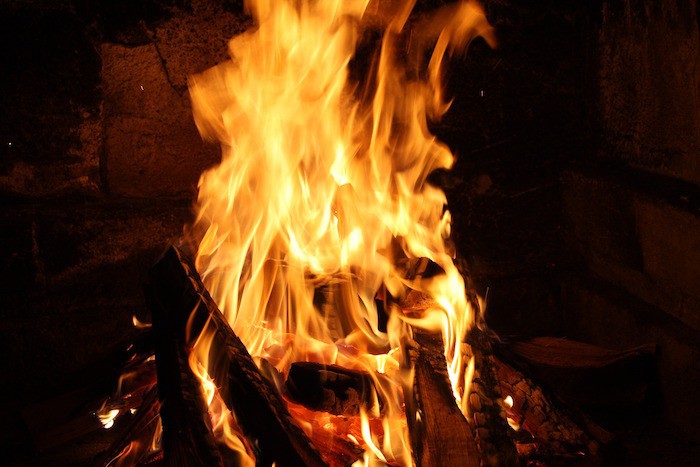
Anistatia Miller & Jared Brown enjoy making a meal out of smoked spirits, thanks to a happy accident that revealed meat flavours from a roast could happily marry with the wood aromas.
Wood is one of our favourite winter harvests. This is the time when we trim the fruit trees, and we have a great use for the heaps of small branches that pile up. And we have great use for all this spare wood. Why? We like smoking spirits.
We came up with this trick a few years ago and have done it many times since. It’s surprisingly simple and – what’s more important – we feel the flavours are far better than the fumes from a smoke gun.
All you need for this is a wood-fired, kettle-type barbecue. We use a basic Weber kettle. If you have the budget or generous parents, a Big Green Egg works just as well. But really any grill in that classic shape does the trick. And, while the world puts grills away for the winter, we’ve found there’s no better season to stand around a warming fire. Now follow along in this two-day process.
Place the bottles of spirit you want to smoke into the freezer the day before you actually set about smoking the contents. We usually do about two litres.
The next day, take small bits of your preferred wood and soak them in a bowl or pitcher for at least 30 minutes. This will ensure your wood will smoulder and smoke rather than burn.
Next, start the charcoal in the barbecue grill. Natural lump charcoal gives a far better flavour than briquettes, which are usually imbued with chemical fire starter and other unpleasant flavours. Position the charcoal on one side of the grill rather than in the centre.
Once the charcoal is no longer putting out a lot of smoke and has lots of red embers, remove the bottles from the freezer and pour them into a metal mixing bowl that will fit inside the grill but still allow you to put the lid over the top. Place the soaked wood on to the embers. Then position the metal bowl on the grill, opposite the charcoal embers so it is not directly over the heat. Close down the top vent and leave the bottom vent halfway open. You want to keep the fire very low. This allows a longer smoking time and helps to avoid bringing the spirit up to a temperature where it could release enough vapour to ignite. (Yes, we have done this dozens and dozens of times.)
We have found that in 20-25 minutes the temperature of the spirits rises from around -5°C to around 58°C – thus, no alcohol is lost. After that, we set the bowl aside and place a baking sheet over it until it cools to room temperature.
It is important to note that the smoke flavour will be highly concentrated. So we cut the resulting smoked spirit with three to four bottles of unsmoked spirit per bottle of smoked spirit. Feel free to scale down a smaller amount – just remember to keep the ratio at 1:3 or 1:4 smoked spirit to neutral spirit.
One variation we discovered by accident is cooking food on the fire while smoking your spirits. The first accident for us was roasting a venison haunch while smoking gin over cherrywood. The haunch took 25 minutes. So did the gin. The resulting flavour was a roast game dinner in a glass with hints of venison, juniper, and cherry smoke. After that we tried roasting beef to make a smoked Bullshot. (If you’re not familiar with the Bullshot, it’s vodka, beef bouillon, Worcestershire sauce, Tabasco, and a squeeze of fresh lemon.) Then we tried roasting lamb to make a Sheepshot; barbecued pheasant to make a Birdshot; and finally returned to a venison haunch to make a Buckshot. Despite the silly names, all of these drinks were seriously good.
While we honestly have not yet tried this on brown spirits, we have had great luck with gin, vodka, tequila, akvavit, and have no doubt mezcal would be fun. (We haven’t gotten there yet either.)
What are our favourite woods? By far, fruitwoods are at the top of the list: cherry, apple, pear, even grape vines. These all contribute sweet, fruity notes and mild smoke to the spirit. Our least favourites from experience are oak (even though it is the ultimate material for building barrels), mesquite, ash, and other bitter woods. If you don’t have easy access to fruit trees in need of pruning, a number of barbecue companies now sell fruitwood chips online and in garden shops, which make it very easy to give this technique a try, even in the deep, dark days of winter.
There’s a whole world of new flavours to explore with this technique. Burn a marshmallow or two along with the wood? A bit of cinnamon bark? Grill bananas or other fruit? Though we have been doing this for years, there are still so many more.


